Get Your Kicks on Route 66, Illinois’ Trail
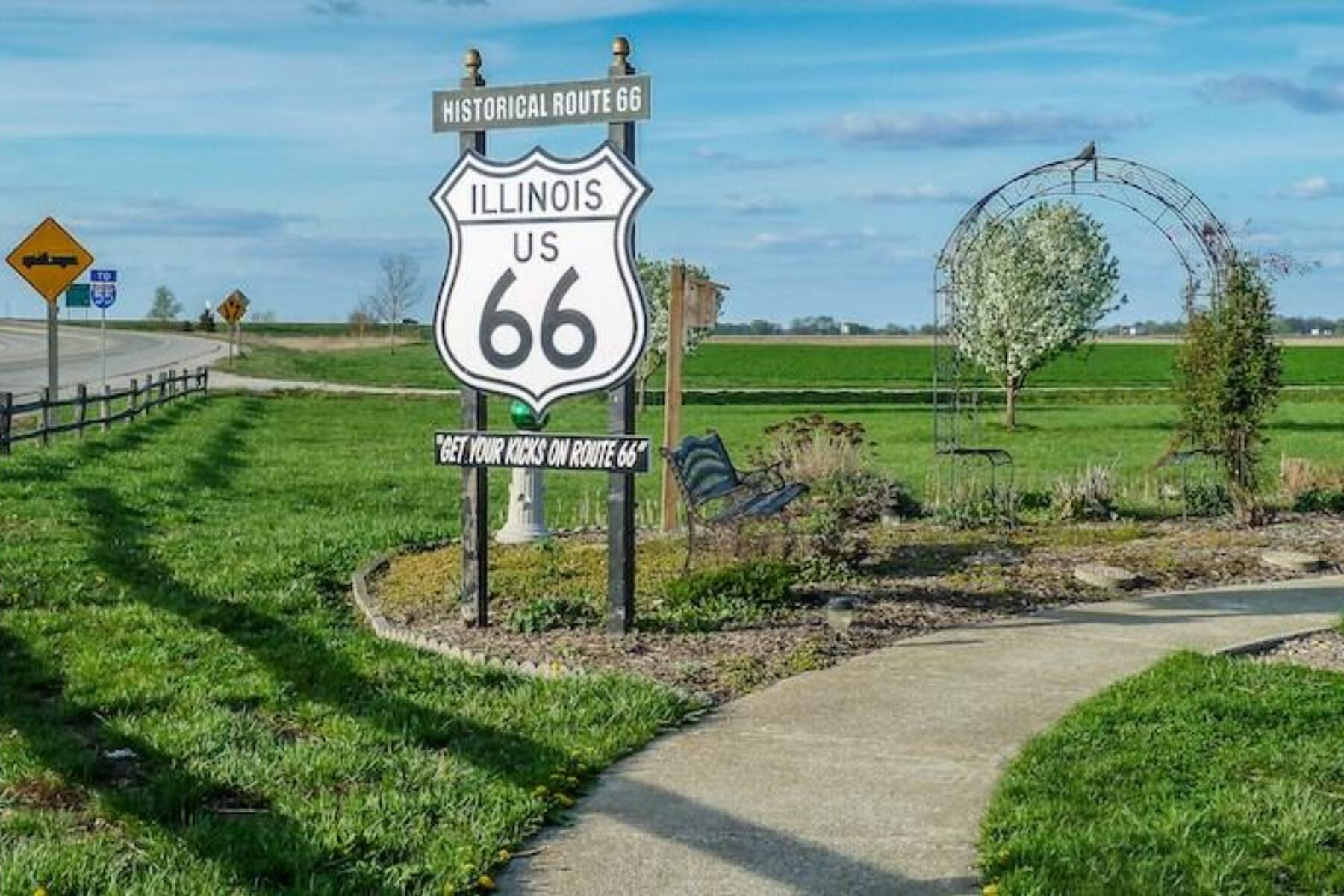
Roll the windows down, turn the music up, and meander through dry deserts and rolling hills—the iconic journey of Route 66, the most famous road in America, the “Mother Road”—stretching thousands of miles from Illinois to California.
Imagine interacting with this historic treasure without the roaring of engines or taste of exhaust fumes, by foot, by bike or on a horse?
This is what Illinois’ Route 66 Trail is working to achieve: a long-distance trail from Chicago to St. Louis; an opportunity to revitalize communities and experience Route 66 as never before.
Route 66: A Gateway to Opportunity
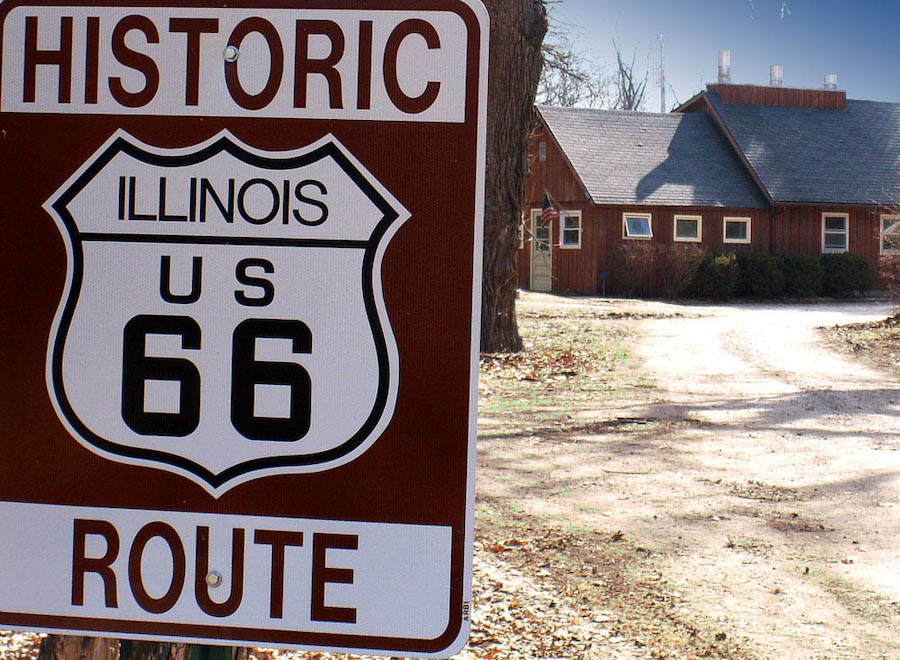
The starting point of Route 66, Illinois stood as an important gateway to America’s West, changing the state’s landscape and transforming people’s lifestyles.
Local businesses flocked to the route as travelers created opportunities for hospitality and sales. Funks Grove Maple Sirup in McLean County, Illinois, is one of these businesses; tapping for their own sugar since 1824, and opening to commercial activity in 1891, this sixth-generation farm was able to thrive along Route 66, selling “sirup” instead of “syrup”—indicating a purer product.
As the interstate highway system expanded away from Route 66, traffic and business followed. The conditions of many businesses and attractions along Route 66 steadily declined, with once-mainstays becoming fringe and tourism slowly depending on the area’s historic elements.
After Route 66 was decommissioned in 1985, the ribbons of old highway have primarily remained forlorn, as visitors from around the world drive on the interstate to various landmarks and barely glimpse segments of the most well-known pavement in America.
Road to Trail: Transforming a Historic Corridor
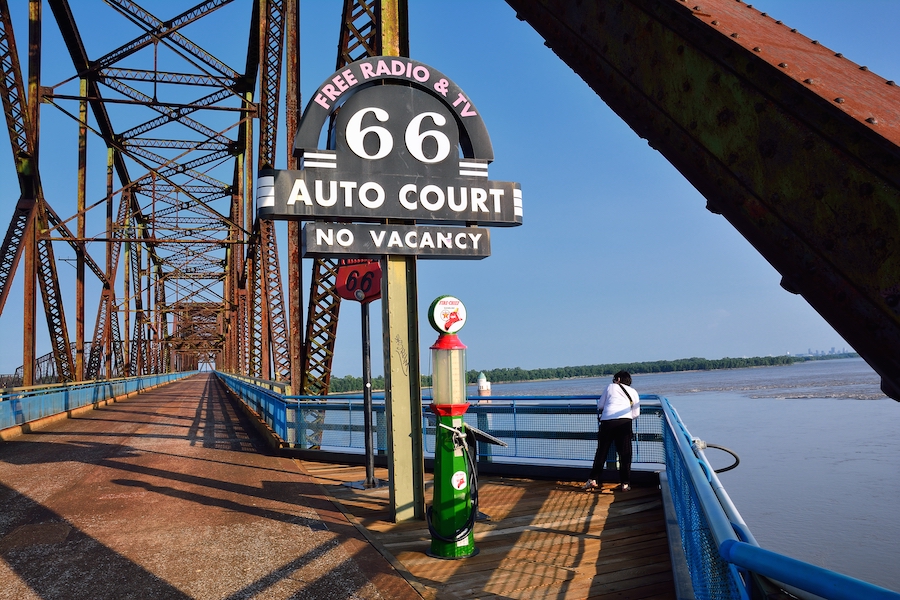
In the past decade, however, local and regional enthusiasm for not only commemorating—but revitalizing—much of this road has grown, and there couldn’t be a better time with the route’s centennial upon us in 2026. Included are plans by the state, formalized several years ago through the Department of Natural Resources, to create Illinois’ Route 66 Trail in an effort to preserve the historic corridor and solidify its significance as a connection to the west.
The project is bringing together a variety of city and county governments, which hope to utilize as much of the historic road as possible—with additional on- and off-road connections where needed—to provide pedestrians, bicyclists, equestrians and more with an immersive Route 66 experience.
Illinois’ Route 66 Trail connects with all the communities and interest points along the historic Route 66, offering a wealth of experiences. The developing trail—which includes all three Route 66 historic alignments: 1926–1930, 1930–1940, and 1940–1977—spans 369 miles, from Millennium Park’s “Bean” in Chicago, to the Old Chain of Rocks Bridge (over the Mississippi River) in St. Louis, Missouri, with an additional 69 miles comprising an alternate route.
This nonmotorized trail adds to the established possibilities of Route 66, offering an enhanced experience to the visitor and benefiting local communities through increased tourism, recreation and education.
Reconnecting Route 66
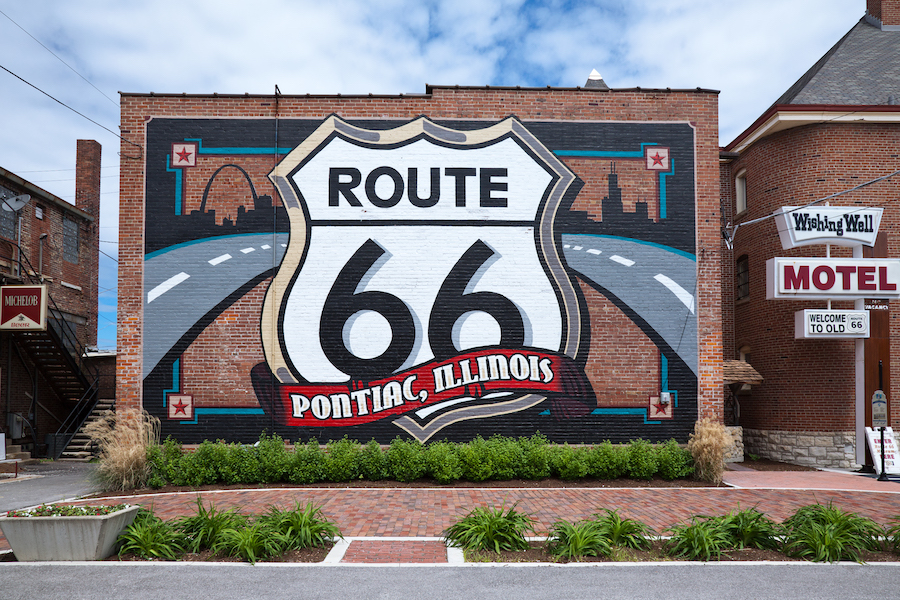
There has been much political energy focused on celebrating Route 66, including legislation in the U.S. Senate (S. 1014) and House (H.R. 66) that, if passed, will work to designate the entire route from Illinois to California as a National Historic Trail. Rep. Rodney Davis (R-Ill.-13) introduced this bill into the U.S. House of Representatives to make sure that Route 66 is given “its honor and its due.” And while Congress discusses Route 66, local and county governments have already begun work on their segments of the trail.
McLean County has planned a 37.2-mile segment on their sections of closed pavement and received $1,920,000 from the state in 2018 to extend its existing 12.8 miles to 16.5 miles. This additional 3.4 miles of trail will ultimately travel south from Shirley to Funks Grove, where trail users can pick up some of the area’s historic sirup and pancake mix!
While funding roadblocks currently prohibit the McLean segment from extending farther north at present, the county remains committed, and County Highway Engineer Jerry Stokes maintains that they will “keep applying” as additional funding becomes available for all project phases.
The Villages of Williamsville and Sherman were recently awarded $2 million to develop a 4.4-mile multiuse trail that will connect the communities and, eventually, link to Illinois’ Route 66 Trail.
Additionally, Litchfield and Mt. Olive are also in the planning stages of transforming 12 miles of the original Route 66 pavement in their communities into a trail to encourage outdoor recreation and tourism and showcase the “Mother Road.”
Driving Toward the Future
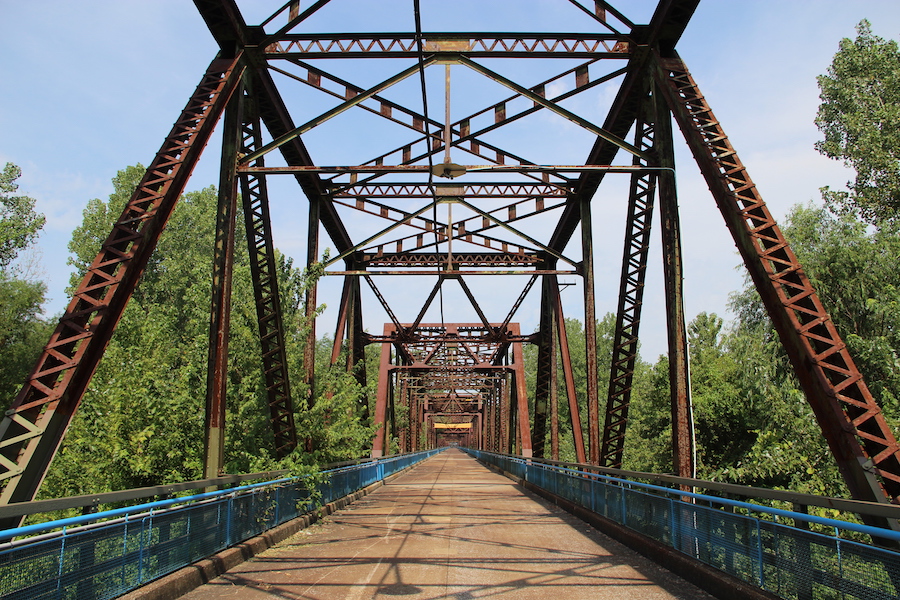
It will take planning, involvement and time for the trail to become a backbone for state, regional, and local trail networks—as Route 66 originally was for the communities along its corridor.
As the centennial celebration approaches, we expect the additional attention on Route 66 to spark other local governments into action to invest in completing their sections of trail, connecting their communities and highlighting the corridor’s rich and vibrant history.
For now, Illinois is on the right track—or route—toward a more active Route 66 experience.
Related: Trails Transform America: Illinois’ Route 66 Trail

Donate
Everyone deserves access to safe ways to walk, bike, and be active outdoors.



